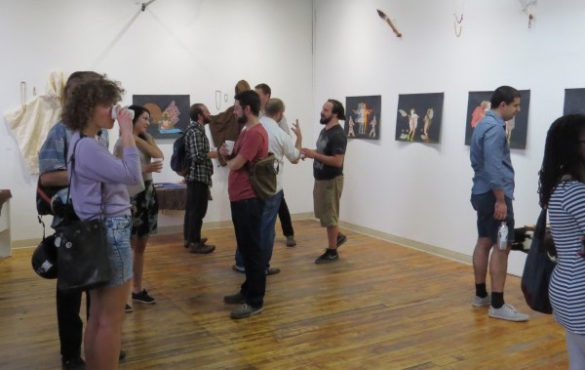Over the past several years Spudnik Press has become a staple for Chicago printmakers and printmaking education. The space and scope of the project continues to grow with the latest expansion, The Annex.
Here is a sneak of an interview with Luke Daly by Bailey Romaine discussing The Annex and specifically Luke’s involvement.
Luke Daly says:
The library was an important part of thinking about what the Annex could be from the beginning. Mainly I was interested in having a physical home for small press, mostly very small-run and handmade literary books, since they are such an important part of the history of alternative or experimental writing in the US, and because they are so tactile and really need to be seen and held to be appreciated. Of course Chicago has places where similar things are available, like the Read/Write Library or Quimby’s, but the focus of the collection that I was interested in putting together at the start was slightly different in that it sought to foreground small, specifically literary publishing from around the US.
Since I’ve been putting together the collection, my interests have developed in an organic way, and I’m finding myself interested in the intersection that seems to be going on between comics, zine and literary cultures. It seems like those categories are learning from one another, and people are doing work that very interestingly exist at the intersection of those different conversations. I’m finding myself more and more drawn to work of this nature. And always work that looks beautiful but that is made simply, since in the end we are a space that’s built around making, and it’s great to be able to have this collection here to show students or to consult for ideas when getting started on a project.
As for the Book Arts Series, which is the series of exhibitions that I curate at the Annex, my idea to pair gallery shows with the publication of artists’ books started to come together while I was researching people who I thought would work well to show here. I knew that I was interested in work that was operating at the intersections of language work and visual work, but often the work that I was encountering that extended this as it’s main goal or focus never totally hit home for me, and I started to feel that placing work at a crossroads of visual and literary could very well be a slightly more involved and creative curatorial task than just seeking and finding artists whose work, as is, fit with my own conceptual goals of the Annex.
